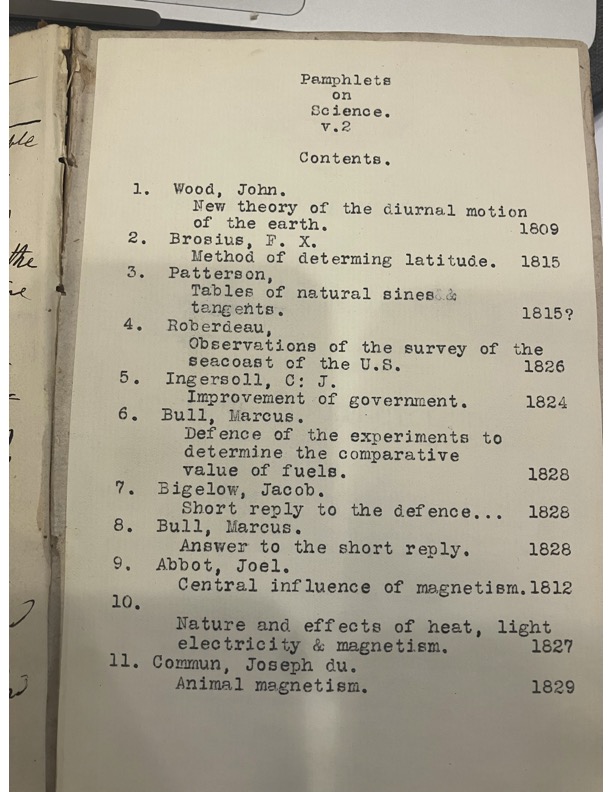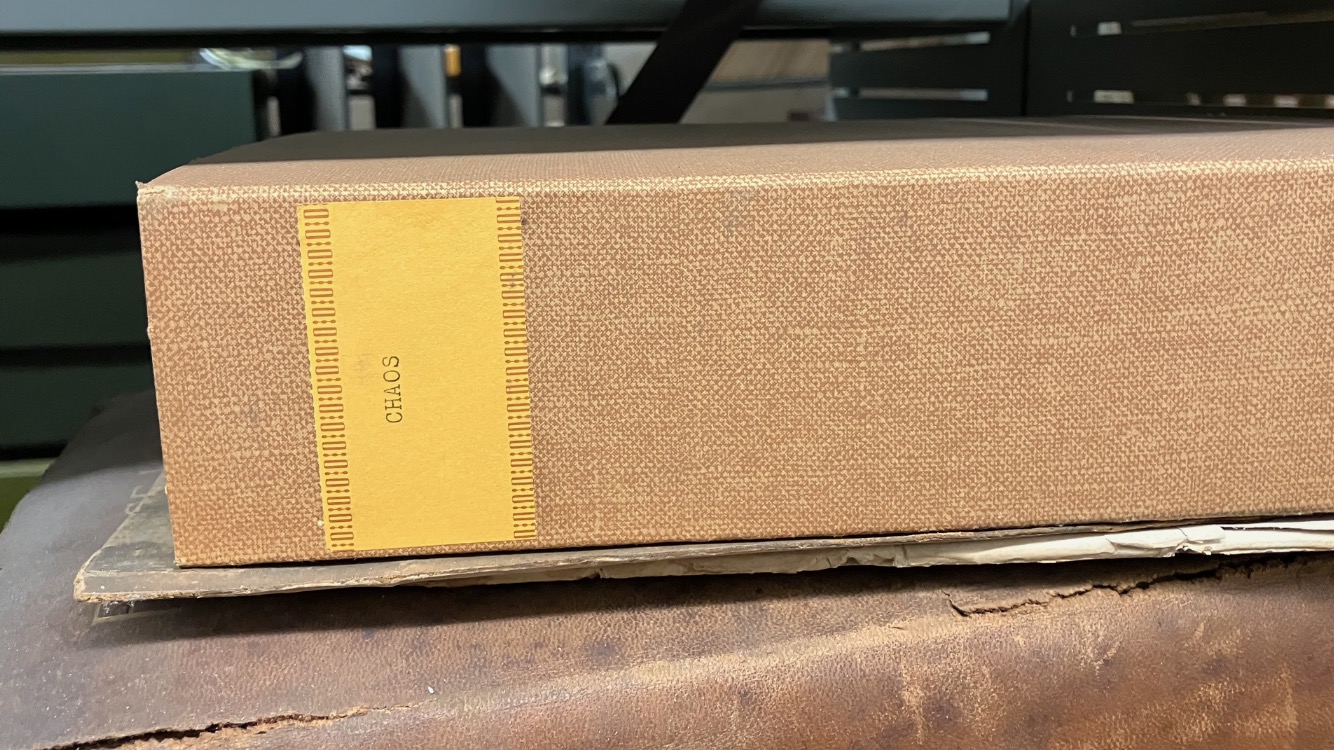“Have You Been to the Attic?”: Digitizing the 250 Years of APS Press Books
I began my Princeton University GradFUTURES Social Impact Fellowship at the American Philosophical Society Press with a clearly delineated task. Press Director Peter Dougherty had hired me to spend three months scouring the Press’s backlist for titles that we could reprint in updated critical editions, for a series called APS Classics. This backlist stretches to at least 1771, the year that saw the release of Volume 1 of the still-running journal Transactions, which featured David Rittenhouse’s epochal article on “The Transit of Venus.” The backlist includes hundreds of books, thousands of articles and pamphlets, and a roster of authors that reads like a veritable Cooperstown of American intellectuals.
When I entered Philosophical Hall on my first day, I expected to spend the next few months scrolling through a spreadsheet of titles each morning, selecting those that intrigued me, reading them, and reporting back about my findings. When Peter informed me that there was no spreadsheet of the complete back catalog, I adjusted my expectations accordingly. I now envisioned myself thumbing through a huge, leather-bound ledger, perhaps even one similar to that which Ben Franklin himself had once used to keep accounts. When Peter informed me that he was not aware of any such ledger, I realized that this job might be a bit more complicated than I had expected.
To put my task in context: The APS Press is currently in the process of digitizing their backlist with our partners at the University of Pennsylvania Press and De Gruyter-Brill. This process involves tracking down physical volumes and shipping them to Germany, where they can be scanned and thereby made available in eBook and print-on-demand form to libraries and individual buyers.
The trouble is, 250 years of scholarly publishing have involved numerous external partnerships, administrative restructurings, and warehouse moves. Each of these tends to be accompanied by a noble attempt to take an exhaustive inventory of our holdings, but things inevitably get lost in the shuffle. This is especially true of works from the 18th and 19th centuries, many of which were printed before modern cataloging practices were standardized and before Library of Congress numbers even existed.

Using a combination of documents received from the Press’s former distributor, the APS Library’s collections, the many conflicting lists compiled over the years, and the Library of Congress website, I have so far been able to assemble a working catalog of nearly 1,000 titles. We are currently in the process of locating and digitizing those titles, and we hope to make them all available in the coming years, with the first batch ready for purchase before the end of 2024. But even this Frankenstein list of lists remains tantalizingly incomplete.
The real adventure began during a conversation with the APS Library & Museum’s Associate Director of Collections, David Gary, who probably knows as much about the Society’s collections as anyone alive. After I explained my job, he said six words that will haunt my dreams: “Have you been to the attic?”
“Not yet,” I replied, pretending that I knew what he was talking about.
“You should check out the attic. There might be some more stuff there of interest to you.”
So up I went to the attic, the top floor of Library Hall. I climbed over piles of busted furniture, scooted around construction equipment, ducked under ventilation ducts and exposed pipes, in search of Dave’s promised “more stuff.” I genuinely could not believe what I found.
Nestled in a back corner of Library Hall’s attic was what I can only describe as a second, secret library. Half a dozen shelves were filled to capacity with centuries of books, journals, pamphlets, transcripts of talks, internal documents, reports to various committees, fundraising broadsides, and even bound collections of eulogies for departed Members. Many of these materials were not officially registered anywhere, often because they were never even “officially” published, but only released in small batches for private circulation. I’m not sure how long David and his predecessors have been managing this collection, but it has clearly been a labor of love.
I went to work, pulling one text after another off the shelves and entering as much information as possible into an ever-growing spreadsheet. As my fingers fell into the steady rhythm of data-entry, my mind was allowed to wander. Mostly, I fantasized about actually reading some of these texts, once the necessary data-input was complete.
Here was James C. Malin’s John Brown and the Legend of Fifty-Six, next to Otto Neugebauer’s Greek Horoscopes and Jacob Viner’s Jayne Lecture on The Role of Providence in the Social Order. On the next shelf were about 100 copies of former APS President Peter Stephen du Ponceau’s Dissertation on the Nature and Character of the Chinese System of Writing, which was evidently not the bestseller the Press was hoping for in 1838. After these came a beautifully illustrated book by Gregory K. Williams simply called Fish Skulls, and a pamphlet by J. A. Detlefsen that asks the crucial question: Are the Effects of Long-Continued Rotation in Rats Inherited? (I did read this last one on my lunch break, and am thrilled to announce that the answer is a resounding “Maybe!”).
At the end of the first shelf, between the seven volumes of Alhacen’s Book of Optics and Adolf Berger’s Encyclopedic Dictionary of Roman Law, I spotted a book that stood out from its neighbors. On closer inspection, I realized it was not actually a book but a box for a book, and that this box was labeled, simply, “CHAOS.” No author. No other information. At this point convinced that I had stumbled into a Borges story, I did what any self-respecting Borges character would do: I pulled the box off the shelf and opened it. There was nothing inside. I’m still looking for the book.

As this digitization project has continued, I’ve collected almost as many stories as books. This project will certainly take longer than the three months of my initial fellowship, and I am thrilled to be staying onboard at the APS through the summer (and perhaps beyond) to continue the job. I’ll be posting regular updates on the search for ever-more texts, highlighting the hidden gems of our back catalog, and keeping a record of all the adventures and misadventures that have come with relaunching the oldest continuously-operating scholarly publisher in America.


